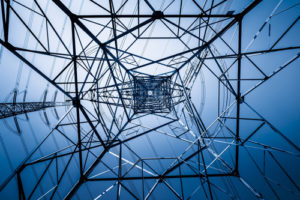Energy is the key to socio—economic growth, environmental sustainability and human development in a society. The SDG 2030 Agenda clearly outlines the intrinsic importance of energy in such a holistic development. With approximately 1.1 billion people still lacking access to electricity and an estimated 2.8 billion without access to clean cooking facilities (IEA Energy Access Report 2017) — it is imperative for the world community to constantly innovate and create new mediums to increase the energy outreach. It is crucial to understand that energy issues are at the heart of achieving sustainable development goals and in overcoming issues such as poverty, food and water crisis, environmental catastrophes etc. After—all, an improved accessibility of energy implies delivery of affordable and reliable energy services in a socially acceptable, economically viable and environmentally sound fashion. In this regards then, new policy frameworks, energy innovation and infrastructure are required to be inclusive— cost—effective solutions, underpinning new business models which leverage digital, versatile, smart and clean technologies. Fundamental to this are the 3 Ds, which though disruptive, are nevertheless necessary:
- De—Carbonization

Here, the desire for climate change mitigation is the primary catalyzer for action plans with sharp focus on reducing greenhouse gas emissions. There are 195 signatories to the Paris Climate Accord, all of whom are now in a race to reduce their carbon footprint. Be it through electricity, vehicle emissions or putting a plug on fossil fuels— countries are adopting drastic measures to decarbonize their environment. Key contributors to such a development are the vast portfolio of variable renewable energy resources (especially solar, wind and nuclear), accompanied by the fast waning out of coal as a resource by nations, such as Finland and France.
Another crucial tenet here is the vehicle electrification which aids the economy-wide “deep de—carbonization” policies. However, here the extent of de—carbonization will be subject to proliferation of low/ zero-carbon generation, which includes impact on fuel demand, electricity loads and power markets— leading us to an age of customized electricity requirement and rate designs.
- Decentralization

As the industry is pushing for more and more renewables, the basic operational system is becoming decentralized. Earlier there was one central national grid system, however with rise in solar photovoltaics and wind there are numerous small power plants— contributing to a smarter grid system. This enables a dynamic and more localized distribution network, which helps in enhancing access to energy and meeting the rising demand. Adoption of decentralized energy grid systems helps in distributing, controlling, monitoring and also storing energy— all of which is subject to shifting consumer preferences. Decentralization involves technology and market development both for electricity and utility consumers’, supported by new distribution grid hardware and software, and a new regulatory paradigm for the energy sector triggering a wide array of distributed energy resources (DERs).
- Digitalization

As decentralization steps up, technology will be required to ensure a secure and consistent energy supply. Given that digitalization of energy sector has already begun, as Internet—of—Things mitigates through complex networks, smart meters have become common. There is now an increased usage of information and communication technologies especially in energy sector, introducing the concept of Enernet or Energy Internet to the world, which enables the nations and people to utilize energy resources optimally. With talks on virtual power plants, interlinking small scale solar and wind plants, heating up— future technologies definitely have the ability to completely transform the world— making it more about renewables, decarbonization and decentralization.
Notably, distributed energy resources powered by IoT have become integral part of the global energy system, especially in context of the energy transition. They provide energy security through effective management of the energy supply (domestic or external resources), robust energy infrastructure and allow for meeting current and future demand.
Next, the energy internet provides accessibility to affordable energy supply across the globe ensuring improved energy efficiency, low costs, customized energy plans, and development of energy supply from low—carbon and renewable resources.
All these together characterize a shift in the energy sector landscape which today presents a new opportunity for all the countries, developing or developed, to meet their energy needs. Ultimately, policymakers need to seize this opportunity, albeit nascent at present, and move towards a future which provides all world citizens quality experience in terms of sustainable environment, energy security and energy equity.
